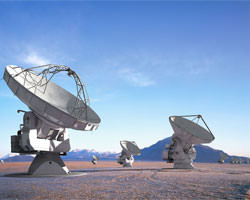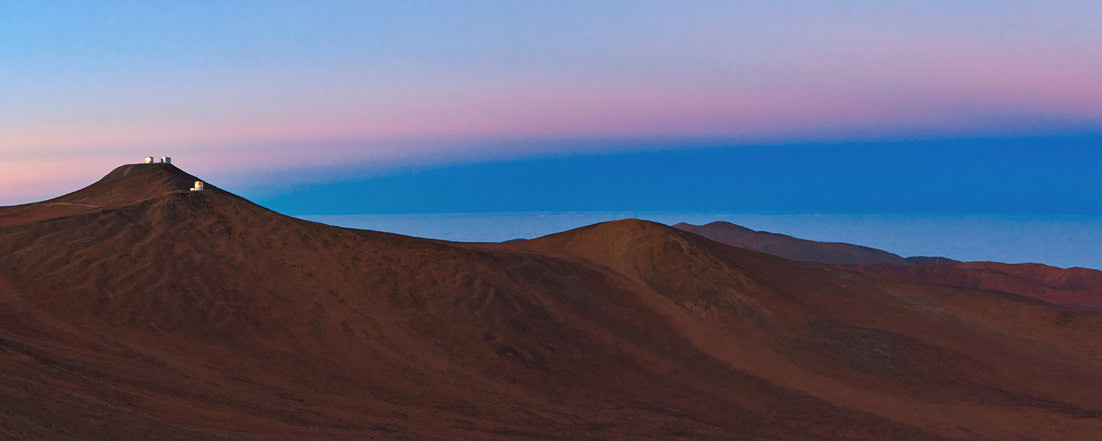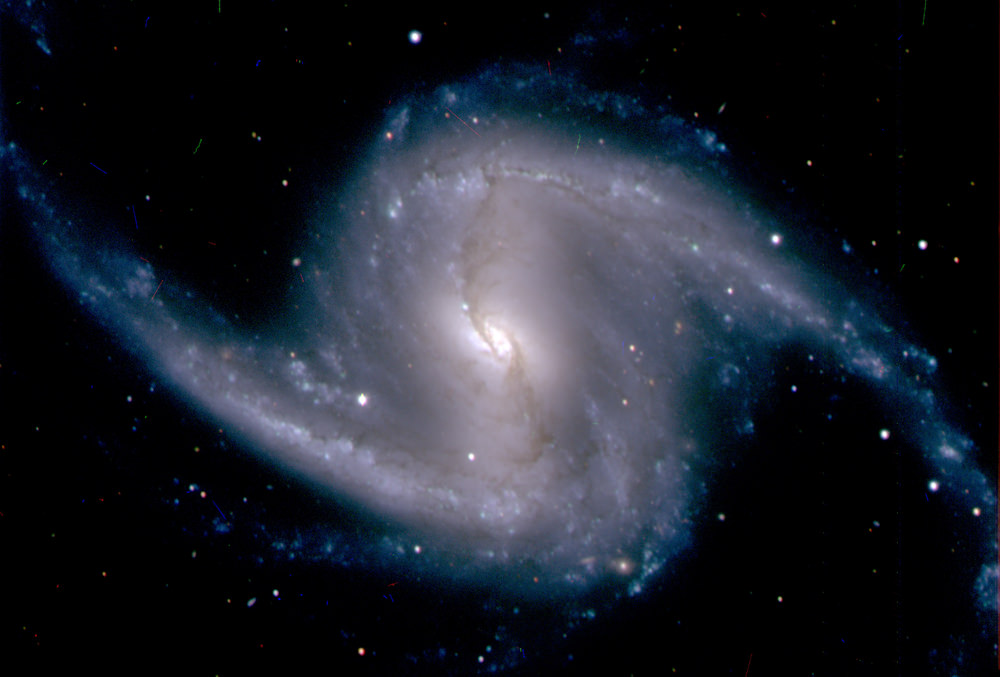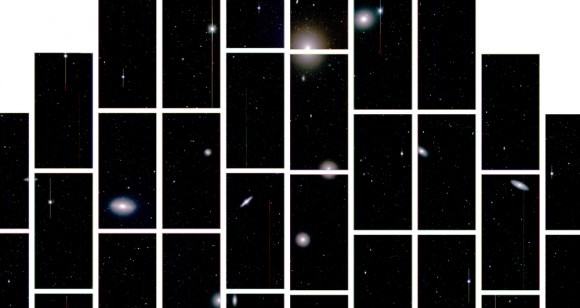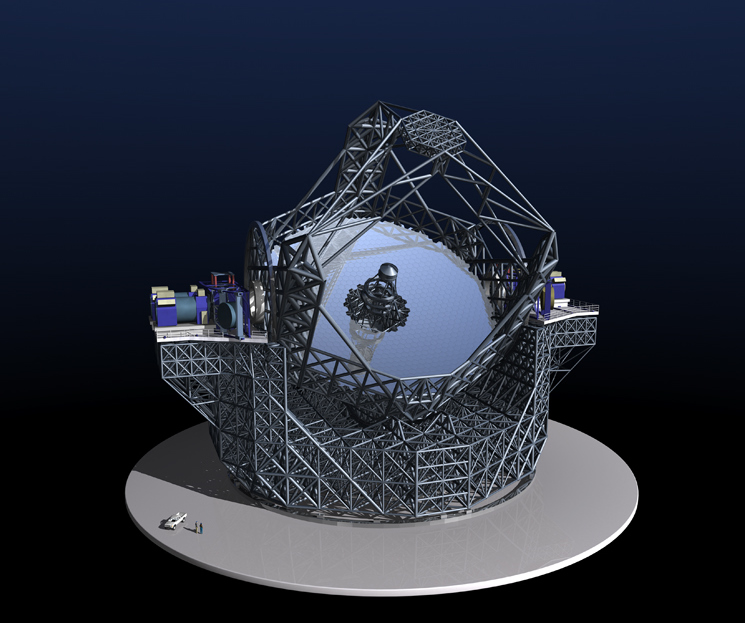South America, especially the Atacama Desert in Chile has become one of the best places in the world to put a telescope. It’s dry, high, and the nights are clear. Today we’ll talk about the monster telescopes already in operation in this region, and the big ones coming soon.
Continue reading “Ep. 530: Astronomy of the Andes: Then and Now, Pt. 2”
What Does the Universe Do When We’re Not Looking?
If you follow some of my other shows, like Astronomy Cast and the Weekly Space Hangout. Of course you do, what a ridiculous thing to say… “if”. Anyway, since you follow those other shows, you know I’m currently obsessed with an upcoming observatory called the Large Synoptic Survey Telescope.
Obsessions are best when they’re shared. So today, I invite you to become as obsessed as I am about the LSST.
In the past, astronomers focused on building bigger telescopes at more remote locations so they could peer more deeply into the past, to resolve the faintest objects, to see right to the edge of the observable Universe.
But there’s a whole other dimension to the Universe: time. And by taking advantage of time, astronomers have made some of the most momentous discoveries in the history of astronomy.
The Large Synoptic Survey Telescope is all about time. Watching the sky over and over, night after night, watching for anything that changes.
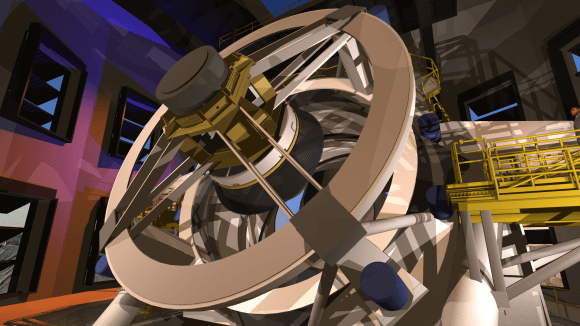
First, let’s talk about some of the kinds of discoveries that can be made when you’re watching the sky for changes.
Perhaps the best example of this is the Mira Variable. These are red giants at the very end of their stellar evolution, almost out of usable hydrogen to burn in their cores. As their stellar flame flickers out, the light pressure can no longer hold against the gravity pulling the star inward. The star compresses in on itself, raising the temperature and pressure, allowing more fusion. It flares up again, and brightens in our sky.
Astronomers discovered that there’s a very specific relationship to the brightness and rate that this brightening happens. In other words, if you know how often a Mira variable flares up, you know how intrinsically bright it is. And if you know how bright it is, you can calculate how far away it is. Even in other galaxies.
That’s what Edwin Hubble did when he surveyed Mira variables in other galaxies. He discovered that most galaxies are actually speeding away from us in all directions, leading to the theory of the Big Bang.
Thanks to time, we understand that we life in an expanding Universe that originated from a single point, 13.8 billion years ago.
Let me give you another example: the discovery of gamma ray bursts. In the 1960s, the US launched a group of satellites as part of the Vela Mission. They had no astronomical purpose, they were designed to watch for the specific gamma ray signature from an unauthorized nuclear weapons test. But instead of nuclear explosions, they detected massive blasts of gamma radiation coming from deep space. These blasts only last for a few seconds and then fade away, leaving a faint afterglow that also fades.
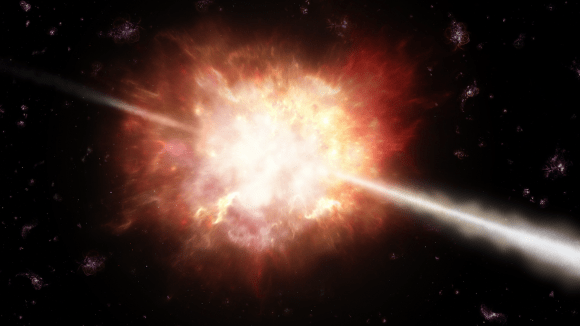
We now know that gamma ray bursts mark the deaths of the largest stars in the Universe, and the formations of new black holes. Other gamma ray bursts signal the collisions of exotic stellar remnants, like neutron stars and white dwarfs.
I can give you many more examples, where the dimension of time lead to a discovery in astronomy:
In 1930, Clyde Tombaugh compared pairs of photographic plates, switching back and forth over and over, looking for any object that moved position. This was how he discovered Pluto. In fact, this same technique is used by astronomers to find other dwarf planets, asteroids and comets to this day.
Astronomers return again and again to galaxies in the night sky, looking for any that have a new star in them. This is a tell tale sign of a supernova, the explosion of a star much more massive than our Sun. Some of these supernovae allowed astronomers to discover dark energy, that the expansion of the Universe is accelerating.
This is what time can help us discover.
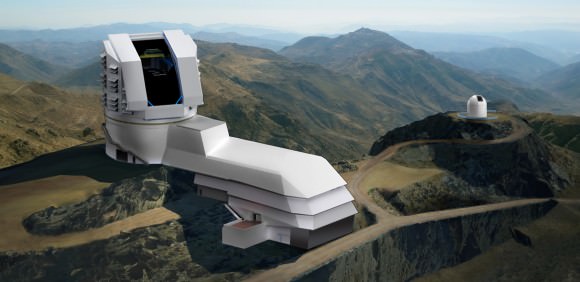
Now, on to the Large Synoptic Survey Telescope. The observatory is currently under construction in north-central Chile, where many of the world’s most powerful telescopes are located.
Its main mirror is 8.4 meters across. Just for comparison, ESO’s Very Large Telescopes are 8.2 metres across. The Gemini Observatories are 8.1 metres across. The Keck Observatory is 10 metres wide. What I’m saying here, is that the LSST is plenty big.
But that’s not its most important feature. LSST is fast. When I say fast, I’m saying this in the astronomical sense, which means that it can gather a lot of light over a wide area on the sky in a very short amount of time. While Keck, for example, can focus incredibly deeply at a tiny spot in the sky, LSST gulps light across a huge region of the sky.
It’ll be able to see 3.5-degrees of the sky, every time it takes a picture. The Sun and the Moon are about 0.5-degrees across in the sky, so imagine a grid 7 moons across and 7 moons high.
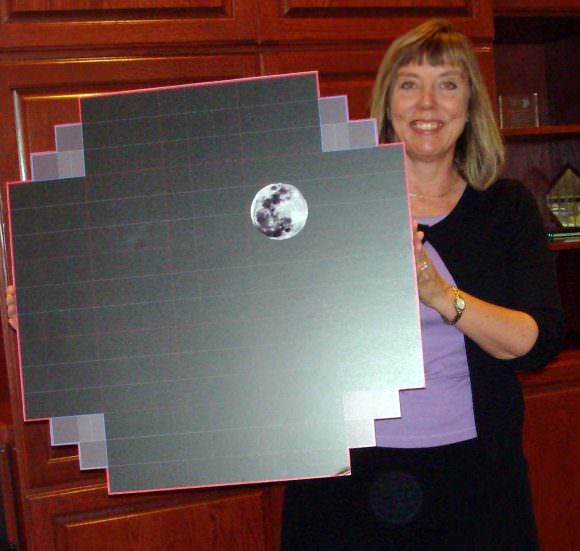
It’ll take a 15-second exposure every 20 seconds. In the amount of time you’ll spend watching this video, the LSST could have taken dozens of high resolution images of the sky.
In fact, it’ll completely image the available sky every few nights. And then petabytes of data will be released onto the internet, available for astronomers to pore over.
Want to find asteroids, just look through the LSST records. Want to know how fast the Universe is expanding, dig through the data. LSST is going to look everywhere and anywhere every couple of nights, and then provide this data to scientists to make discoveries.
Assuming the construction isn’t delayed, the Large Synoptic Survey Telescope should see first light in 2019. Shortly after that, it’ll be disgorging mountains of astronomical data onto the internet.
And shortly after that, I suspect, we’ll start to hear everything the Universe was doing when we weren’t watching before. Because now, thanks to LSST, we’ll be watching all the time.
Celestial Laser Show? Nope, These Are Trails Showing Off Star Colors
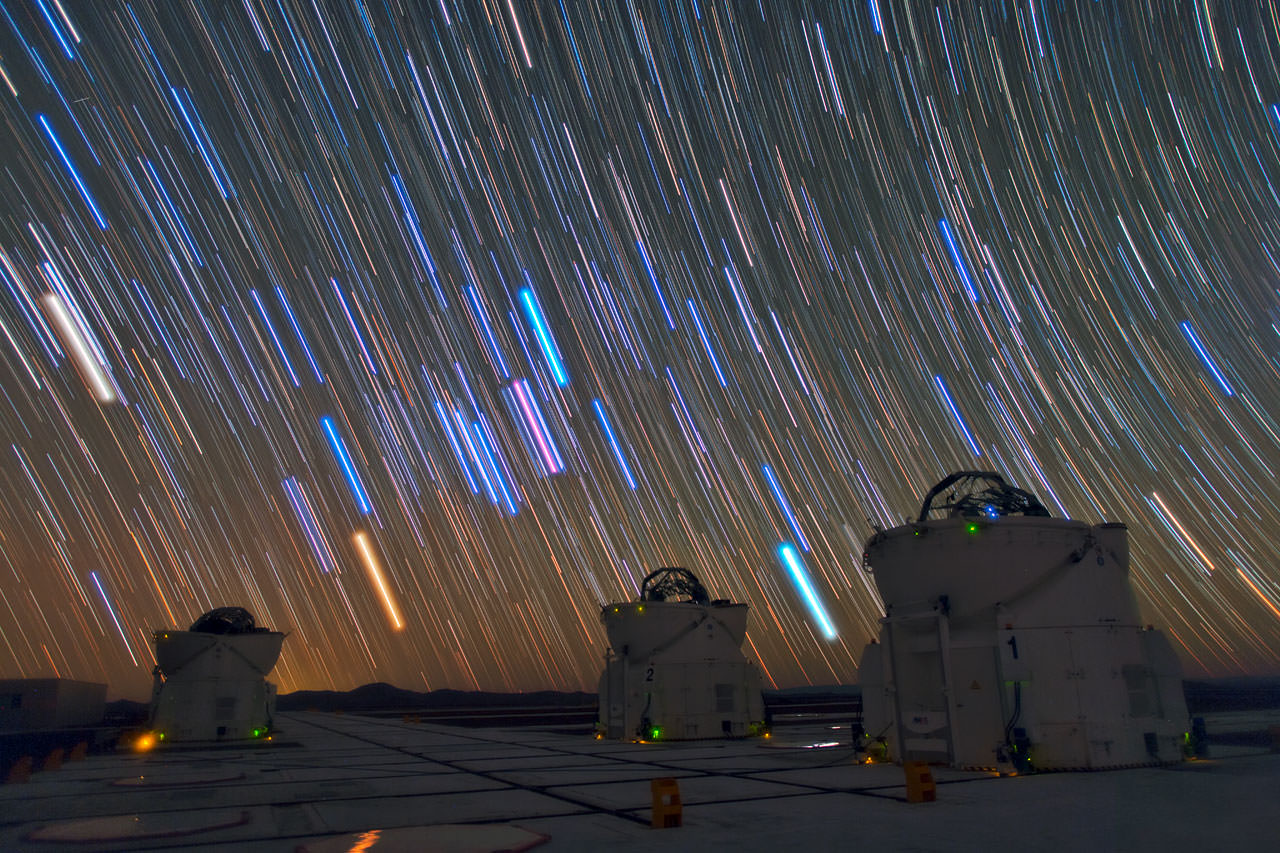
There are so many colorful streaks in that image above that you’d be forgiven for thinking somebody is shooting lasers around the European Southern Observatory (ESO) in Chile. Actually, though, this demonstrates a common technique for astronomy photo-taking where you do a time lapse to watch the stars moving as the Earth makes its daily rotation.
The image of auxiliary telescopes of Very Large Telescope Interferometer is not only pretty, but does have some scientific interest as well, ESO said.
“This technique … enhances the natural colours of the stars, which gives an indication of their temperature, ranging from about 1000 degrees Celsius [1,832 Fahrenheit] for the reddest stars to a few tens of thousands of degrees Celsius [or Fahrenheit] for the hottest, which appear blue. The sky in this remote and high location in Chile is extremely clear and there is no light pollution, offering us this amazing light show,” stated the European Southern Observatory.
According to ESO, these supplementary telescopes working together allow astronomers to “see details up to 25 times finer than with the individual telescopes.” You can read more about the VLTI at this ESO link, which includes some interesting facts — such as why the interferometers are named Antu, Kueyen, Melipal and Yepun.
Source: European Southern Observatory
Zodiacal Light Over ESO’s La Silla Observatory
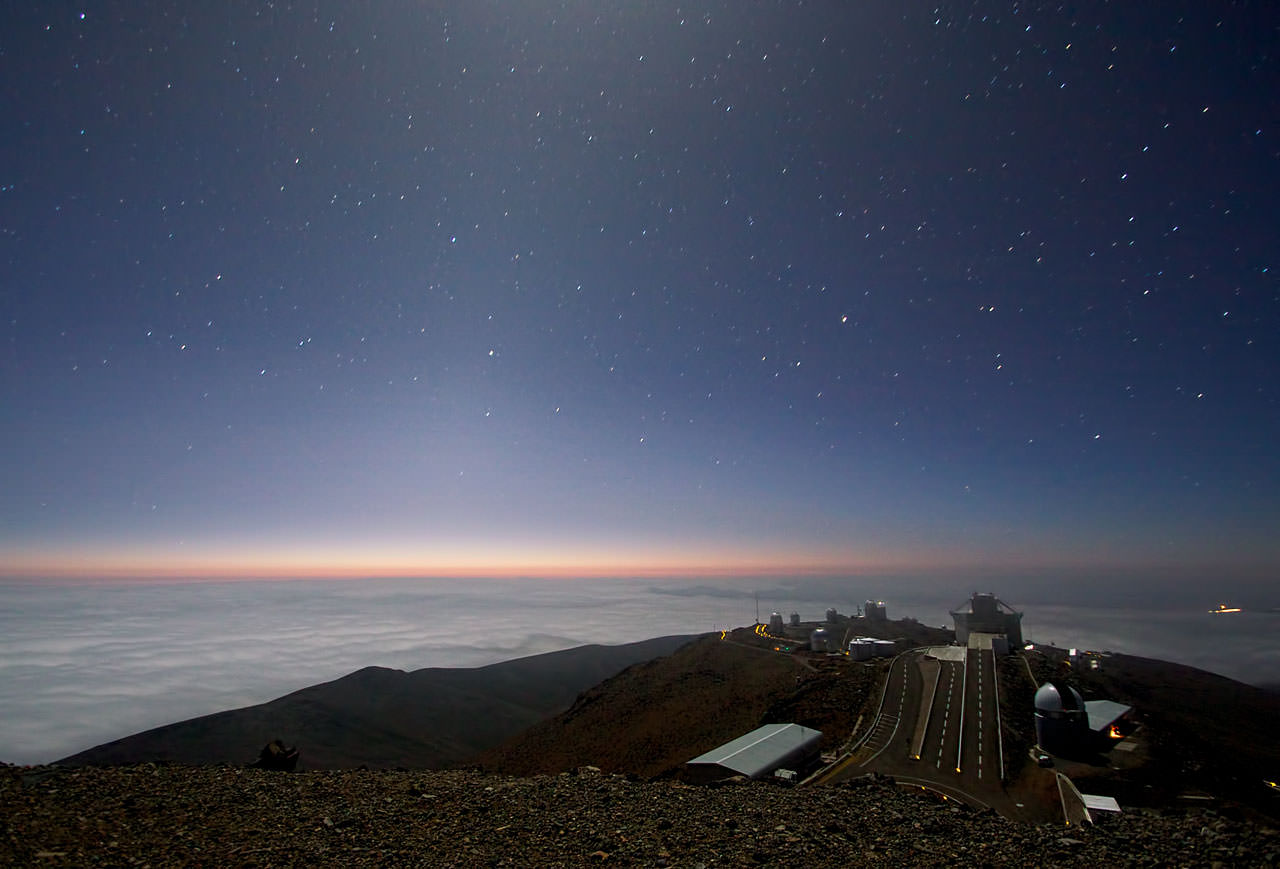
We don’t put much stock in astrology or horoscopes here at Universe Today, but there’s one thing related to the zodiac that’s all science and no superstition: zodiacal light, captured here in a gorgeous photo by astronomer Alan Fitzsimmons above ESO’s La Silla Observatory.
Created by sunlight reflected off fine particles of dust concentrated inside the plane of the Solar System, zodiacal light appears as a diffuse, hazy band of light visible in dark skies stretching away from a recently-set Sun (or before the Sun is about to rise).
The Moon is located just outside the frame of this picture, bathing the observatory in an eerie light that is reflected off the clouds below.
The La Silla Observatory is located at the outskirts of the Chilean Atacama Desert at an altitude of 2400 meters (7,900 feet). Like other observatories in this area, La Silla is located far from sources of light pollution and, like ESO’s Paranal Observatory, it has some of the darkest night skies on the Earth.
The dome in the foreground, just to the right, is the Swiss 1.2-metre Leonhard Euler Telescope named in honor of the famous Swiss mathematician Leonhard Euler (1707–83).
Image credit: A. Fitzsimmons/ESO
A Radio Astronomer’s Paradise
Last month a dozen journalists from around North America were guests of the National Radio Astronomy Observatory and got to take a trip to the Atacama Desert in Chile to attend the inauguration of the Atacama Large Millimeter/submillimeter Array observatory — ALMA, for short.
It was, in no uncertain terms, a radio astronomer’s paradise.
Join one radio astronomer, Dr. Nicole Gugliucci, on her trip to the 5100-meter-high Chajnantor Plateau to visit the ALMA sites in this video, also featuring NRAO’s Tania Burchell, John Stoke, Charles Blue and the Planetary Society’s Mat Kaplan.
Read about this and more on Nicole’s NoisyAstronomer blog.
ALMA will open a new window on celestial origins, capturing never-before seen details about the very first stars and galaxies in the Universe, probing the heart of our galaxy, and directly imaging the formation of planets. It is the largest leap in telescope technology since Galileo first aimed a lens on the Universe.
The Paranal and the Shadow of the Earth
This beautiful photo, taken by ESO photo ambassador Babak Tafreshi, shows the European Southern Observatory’s Very Large Telescope array and VISTA telescope atop the peaks of the Cerro Paranal in Chile’s Atacama Desert. In the distance the Earth’s shadow extends outward toward the horizon, divided from the bluer daytime sky by the dusky pink “Belt of Venus.”
At an altitude of 2,635 meters (8,645 feet) the Paranal looks down onto a sea of clouds covering the Pacific Ocean, visible at right, whose shores lie 12 km in the distance.
Image credit: ESO/B. Tafreshi (twanight.org)
First Images in a New Hunt for Dark Energy
Zoomed-in image from the Dark Energy Camera of the barred spiral galaxy NGC 1365, about 60 million light-years from Earth. (Dark Energy Survey Collaboration)
The ongoing search for dark energy now has a new set of eyes: the Dark Energy Camera, mounted on the 4-meter Victor M. Blanco telescope at the National Science Foundation’s Cerro Tololo Inter-American Observatory in Chile. The culmination of eight years of planning and engineering, the phone-booth-sized 570-megapixel Dark Energy Camera has now gathered its very first images, capturing light from cosmic structures tens of millions of light-years away.
Eventually the program’s survey will help astronomers uncover the secrets of dark energy — the enigmatic force suspected to be behind the ongoing and curiously accelerating expansion of the Universe.
Zoomed-in image from the Dark Energy Camera of the Fornax cluster
“The Dark Energy Survey will help us understand why the expansion of the universe is accelerating, rather than slowing due to gravity,” said Brenna Flaugher, project manager and scientist at Fermilab.
Read more: Polar Telescope Casts New Light on Dark Energy
The most powerful instrument of its kind, the Dark Energy Camera will be used to create highly-detailed color images of a full 1/8th of the night sky — about 5,000 square degrees — surveying thousands of supernovae, galactic clusters and literally hundreds of millions of galaxies, peering as far away as 8 billion light-years.
The survey will attempt to measure the effects of dark energy on large-scale cosmic structures, as well as identify its gravitational lensing effects on light from distant galaxies. The images seen here, acquired on September 12, 2012, are just the beginning… the Dark Energy Survey is expected to begin actual scientific investigations this December.
Full Dark Energy Camera composite image of the Small Magellanic Cloud
“The achievement of first light through the Dark Energy Camera begins a significant new era in our exploration of the cosmic frontier,” said James Siegrist, associate director of science for high energy physics with the U.S. Department of Energy. “The results of this survey will bring us closer to understanding the mystery of dark energy, and what it means for the universe.”
Read more on the Symmetry Magazine article here, and you can also follow the Dark Energy Survey on Facebook here. (The Fermilab press release can be found here.)
Images: Dark Energy Survey Collaboration. Inset image: the 4-meter Blanco Telescope dome at CTIO (NOAO)
The Dark Energy Survey is supported by funding from the U.S. Department of Energy; the National Science Foundation; funding agencies in the United Kingdom, Spain, Brazil, Germany and Switzerland; and the participating DES institutions.
SOLID Clues for Finding Life on Mars
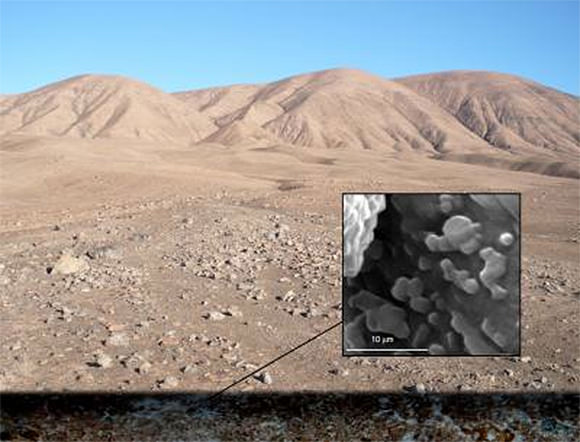
[/caption]
Researchers from the Center of Astrobiology (CAB) in Spain and the Catholic University of the North in Chile have found an “oasis” of microorganisms living two meters beneath the arid soil of the Atacama, proving that even on the driest place on Earth, life finds a way.
Chile’s Atacama Desert receives on average less than .01 cm (.004 inches) of rain per year. In some locations rain has not fallen for over 400 years. But even in this harsh environment there is moisture… just enough, at least, for rock salts and other compounds that can absorb any traces of water to support microbial life beneath the surface.
Using a device called SOLID (Signs Of LIfe Detection) developed by CAB, the researchers were able to identify the presence of microorganisms living on thin films of water within the salty subsurface soil.
Even the substrate itself is able to absorb moisture from the air, concentrating it into films only a few microns thick around the salt crystals. This gives the microorganisms everything they need to survive and flourish — two to three meters underground.
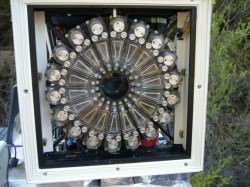
At that depth, there is no sunlight and no oxygen, but there is life.
And even when researchers dug to a depth of five meters (a little over 16 feet) and took samples back to a lab, they were able to not only locate microorganisms but also revive them with the addition of a little water.
Of course, the implications for finding life — or at least the remains of its past existence — on Mars is evident. Mars has been shown to have saline deposits in many regions, and the salt is what helps water remain liquid, longer.
“The high concentration of salt has a double effect: it absorbs water between the crystals and lowers the freezing point, so that they can have thin films of water (in brine) at temperatures several degrees below zero, up to minus 20 C,” said Victor Parro, researcher from the Center of Astrobiology (INTA-CSIC, Spain) and coordinator of the study. This is within the temperature range of many regions of Mars, and also anything located several meters below the surface would be well protected from UV radiation from the Sun.
“If there are similar microbes on Mars or remains in similar conditions to the ones we have found in Atacama, we could detect them with instruments like SOLID,” Parro said.
The development of a new version of the SOLID instrument is currently underway for ESA’s ExoMars program.
Read more here on the Science Codex article.
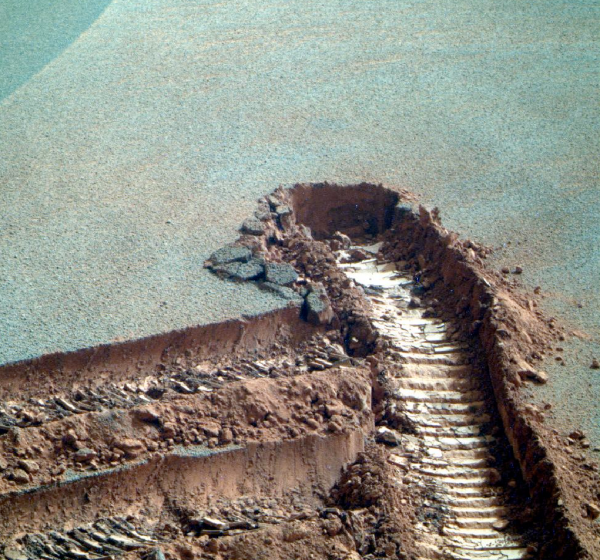
Armazones Chile to be the Site for the 42 meter European Extremely Large Telescope?
Question: Where are the night skies always dark, cloud-free 360 days a year, bone-dry, and orbiting 3.5 km above sea level?
Answer: Armazones Mountain, Atacama desert, Chile.
Question: Who wants to go live there?
Answer: The European Extremely-Large Telescope (E-ELT)!
“We are talking about the biggest telescope in the world, the biggest for a long time to come. That means we have to choose the best spot. Chile has a superb location. It’s the best in the world, there’s no doubt,” the European Southern Observatory’s astronomer, Massimo Tarenghi, told AFP. He is one of four astronomers – two Chileans, an Italian (Tarenghi) and a German – who were in the desert this week to evaluate its suitability compared to the main other contender: the Spanish isle of La Palma in the Canary Islands off western Africa.
The European Southern Observatory (ESO), an intergovernmental astronomical research agency that already has three facilities operating in the Atacama desert, including the Very Large Telescope array in the town of Paranal which is currently considered Europe’s foremost observatory.
Work on the E-ELT is to begin in December 2011 and cost 90 million euros (120 million dollars) … once a decision is made on the site, which will be as early as March this year.
When complete, the E-ELT will be “the world’s biggest eye on the sky,” according to the ESO, which hopes it will “address many of the most pressing unsolved questions in astronomy.”
The E-ELT is likely to be as revolutionary in the field of astronomy as Galileo’s telescope 400 years ago that determined that the Sun, and not the Earth, was the center of our universe, according to the European agency based in Munich, Germany. The German astronomer in Chile, Wolfgang Gieren, waxed happily about the possibilities of the future telescope. “In no more than 15 years we could have the first good-resolution spectra of planets outside our universe that are the same size of Earth and see if we can detect signs of life,” he said.
One of the Chilean astronomers, Mario Harmuy, said the Armazones provided an ideal location. “Several things come together here. The cold Humboldt Current, which passes by Chile’s coast, means that there is a high pressure center in the Pacific that deflects high clouds and prevents cover over this part of the continent,” he said. “To the east, the high Andes mountains prevent humidity from moving in from the Atlantic with clouds. The higher you are, the less humidity there is, and thus the light from the stars go through less of the atmosphere and is distorted less when it hits the telescope.” To boot, the Chilean location is free of the storms that hit the Canary Islands and the Sahara, he said.
Tarneghi added that the ESO’s existing Paranal observatory nearby also meant that much of the ground infrastructure was already in place.
Chile’s government was equally enthusiastic about hosting the E-ELT. Gabriel Rodriguez, in charge of the foreign ministry’s science and technology division, said Chile was ready to cede the 600 hectares (1,500 acres) needed for the project. The government is to submit its offer to the ESO next Monday, with a decision expected early March.
The Italian astronomer cautioned that despite Chile’s obvious advantages, the tender had to be weighed carefully for all its aspects. “Neither any of us nor the ESO know what the final decision will be. We need to receive the Chilean and Spanish proposals and evaluate factors of operation, work and production costs,” Tarenghi said.
The other Chilean astronomer, Maria Teresa Ruiz, remained fired up at the potential of the new instrument. The “surface area of this telescope is bigger than all the others in Chile combined, which will allow us to explore things in the universe that we can’t even imagine today,” she said.
Source: AFP


